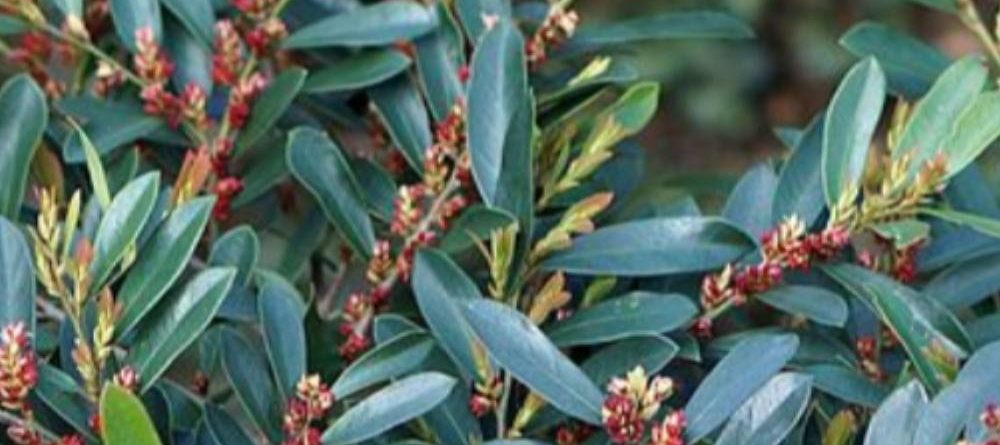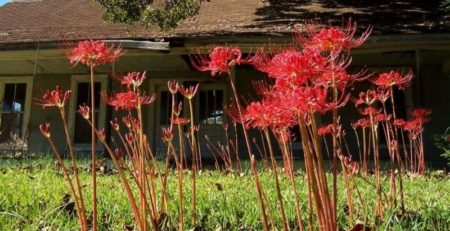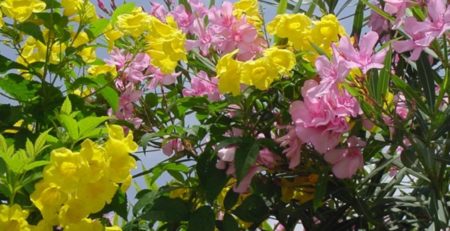Step aside Boxwood…here comes Distilium
“Distylium: The best shrub you’ve never heard of” is a quote in an article in the Tallassee Democrat by a Leon County Extension agent. Because it is a relative newcomer to the nursery trade, you are certainly not alone if you have not yet heard of this gloriously cascading plant. This is an easy-care dream plant, compact and evergreen, that requires little pruning, if any, and is shade tolerant and disease and pest resistant. Another writer reminded that it has not been that long ago that none of us knew of Loropetalum or Encore Azaleas, and look at them now.
Distylium is a genus of some 18 species of evergreen shrubs and trees in the witch hazel family, and among those, several delightful and usable hybrids were created from Distylium racemosum and Distylium myrocoides. Beginning in 2005 seeds were sown, grown, and studied, and eventually patented, named, and introduced by Dr. Michael Dirr, a retired University of Georgia horticulture professor, along with his plant professional partners, Jeff Beasley and Mark Griffin at Plant Introductions Inc.
Dr. Dirr states that these are tough plants are an excellent alternative to junipers, hollies, Indian hawthorns, boxwood and “other green meatballs”. They are very striking as container plants and while they are not technically listed as a pollinator plant, they do attract late winter and early spring bee arrivals.
Distylium is a full to partial sun plant with good drought tolerance once established, and depending on the variety, heights of those sold in garden centers in the US may vary between 3-8 feet with widths of 4-5 feet. It might very well turn out to be a replacement for more common shrubs used for massed plantings and hedges such as the previously mentioned hollies and boxwoods.
The plant is unusual and interesting enough that few plant-enthusiasts will walk past it without stopping to comment or ask what it is. It comes in a variety of heights so the gardener can choose one that is perfect for the spot, and it rarely needs pruning. It is labeled hardy in zones 7a-9b, but history demonstrates it to be somewhat more cold-hardy than the zone classification would imply, and it is deer and rabbit resistant.
Here are some readily available varieties to consider:
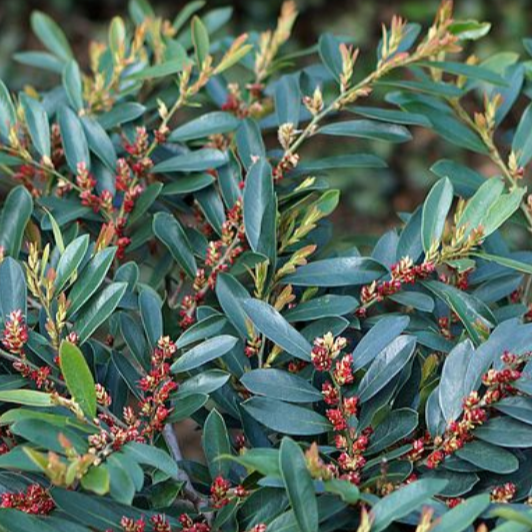
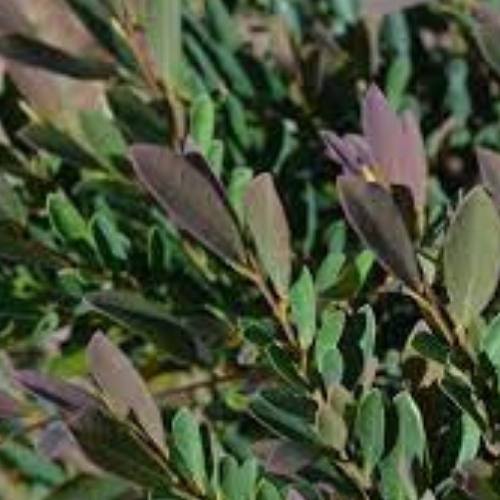
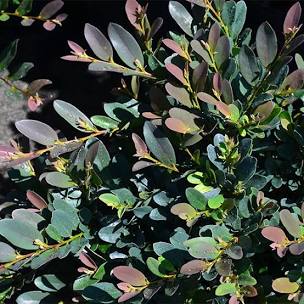
‘Blue Cascade’ is a dense and compact evergreen shrub with a mature height and spread of 3-4 feet and beautiful cascading matte blue-green foliage that creates a layered effect. The new leaves emerge in spring with a bronze hue, then settle into the blue-green color that lasts all year. There are tiny, delicate deep ruby red flowers that coat the branches from January through March. Blue Cascade is flawless as a container plant, and offers a wonderful replacement for typical and overused foundation shrubs.
‘Vintage Jade’ (shown in large picture at top of the page) has a neat and tidy compact habit, is drought and heat tolerant and has a mature height two to four feet with a spread of four to five feet. This easy-care evergreen plant has a graceful mounding shape and the leaves maintain a beautiful blue-green color year-round and responds well to a half day of shade. When summer ends there are small maroon flowers blooming along the arching stems providing a touch of color to the winter garden. The perfect plant beneath windows along the foundation, or as accents in the perennial bed.
‘Cinnamon Girl’ is a shorter variety of Distylium, with a height and width of one to three feet. Evergreen and drought and heat tolerant, pest and disease resistant. These plants are hard-working, tough and easy-care replacements for boxwood and other usual foundation shrubs. The new leaves emerge in almost a plum-purple before turning blue-green as they mature. This may not be the show-stopper that some plants are, but it is sturdy, dependable and reliably green.
‘Coppertone’ is somewhat larger than other Distyliums, maturing to three to four feet with a width of four to five feet. This broadleaf evergreen has copper-red new foliage that turns blue-green during the growing season. Little to no maintenance required, but readily accepts any necessary pruning to keep it in bounds. Handles partial shade and occasional wet soils or drought, adapts to most soils and is deer and rabbit resistant.

Cindy is a Dallas County Master Gardener, class of 2013, and an avid collector of Japanese maples. Her garden is beneath tall trees, so the plants must be shade tolerant. Hers is not a flower garden, but rather a garden focusing on textures and shapes, and of course her growing collection of 35-40 Japanese Maples.

